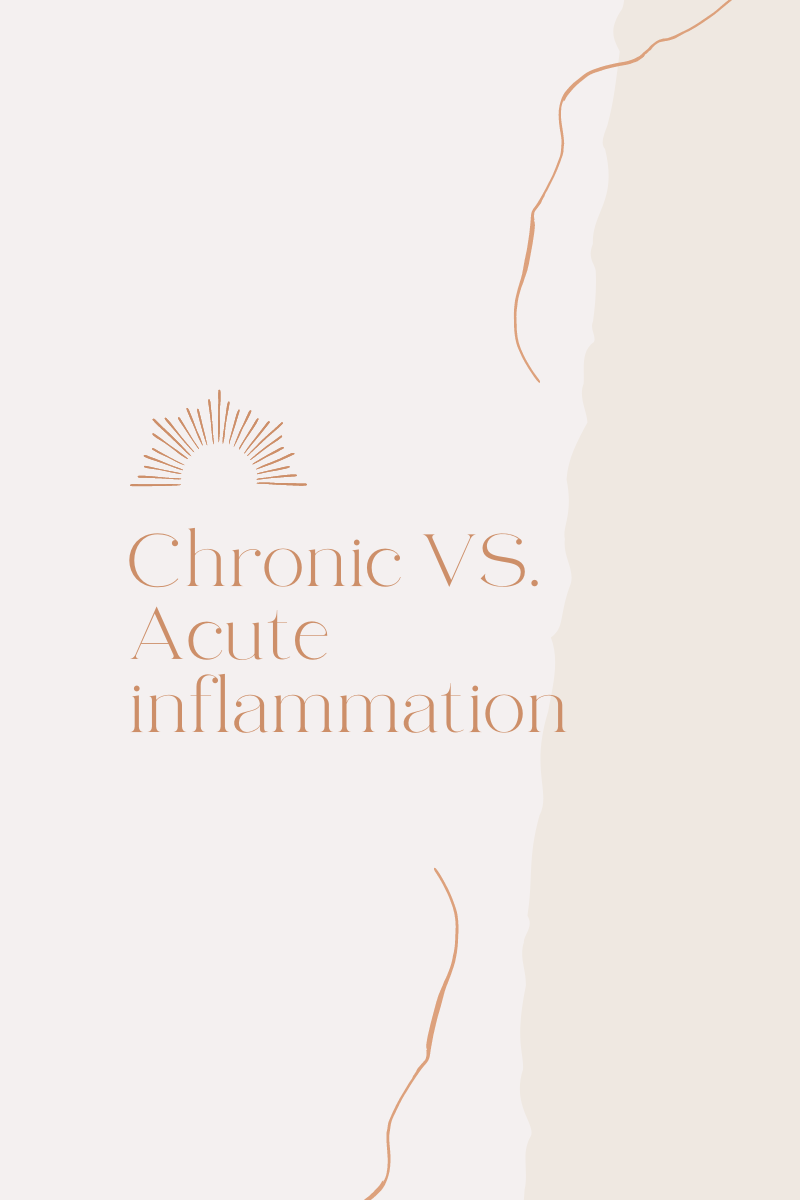Inflammation is the body’s intricate response to injury, infection, or harmful stimuli, serving as a defense mechanism to protect and heal tissues. However, not all inflammation is the same. There’s a fundamental distinction between acute inflammation, a necessary and immediate response, and chronic inflammation, a persistent and potentially harmful condition. In this exploration, we’ll dissect the differences between acute and chronic inflammation, their characteristics, causes, and implications for our health.
Acute Inflammation: The Immediate Defender
Acute inflammation is the body’s rapid and short-term response to injury, infection, or tissue damage. Key characteristics include:
- Rapid Onset: Acute inflammation begins swiftly after an injury or infection and is usually resolved within a few days.
- Localized Symptoms: It typically manifests as redness, swelling, heat, pain, and sometimes loss of function at the affected site.
- Neutrophil Dominance: Neutrophils, a type of white blood cell, are the primary responders in acute inflammation, swiftly migrating to the site of injury or infection to combat pathogens and remove damaged cells.
- Beneficial and Protective: Acute inflammation is crucial for healing and protecting the body from further harm. It promotes tissue repair and regeneration.
Common Causes of Acute Inflammation:
- Physical injuries like cuts, burns, or trauma
- Infections caused by bacteria, viruses, or fungi
- Foreign bodies such as splinters or allergens
Chronic Inflammation: The Silent Agitator
Chronic inflammation, in contrast, is a prolonged and persistent inflammatory response that can last for weeks, months, or even years. Key characteristics include:
- Prolonged Duration: Chronic inflammation persists long after the initial trigger, often without clear resolution.
- Systemic Effects: Unlike acute inflammation, chronic inflammation can affect the entire body systemically, even if it originates from a specific site.
- Immune Cell Diversity: It involves a wider range of immune cells, including lymphocytes, macrophages, and other inflammatory mediators.
- Tissue Destruction: Instead of promoting healing, chronic inflammation can lead to tissue damage and scarring.
Common Causes of Chronic Inflammation:
- Persistent infections
- Autoimmune disorders where the immune system attacks healthy tissues
- Prolonged exposure to irritants like pollutants, obesity, stress, or unhealthy lifestyle habits
Implications for Health
Acute inflammation is a vital and beneficial process that aids in healing and recovery. However, chronic inflammation can have detrimental effects on health:
- Increased Disease Risk: Chronic inflammation is linked to various chronic conditions, including cardiovascular diseases, diabetes, cancer, autoimmune disorders, and neurodegenerative diseases.
- Tissue Damage: Long-term inflammation can damage healthy tissues and impair organ function, leading to complications.
- Accelerated Aging: Chronic inflammation contributes to premature aging by affecting cellular processes and immune function.
Managing Inflammation
While acute inflammation typically resolves on its own, managing chronic inflammation is essential for maintaining health:
- Healthy Lifestyle: Adopting an anti-inflammatory diet, regular exercise, stress management, and adequate sleep can help mitigate chronic inflammation.
- Medical Intervention: Seeking medical advice and treatment for underlying conditions contributing to chronic inflammation is crucial for effective management.
Conclusion
Understanding the differences between acute and chronic inflammation is pivotal in recognizing their distinct roles and implications for overall health. While acute inflammation is a necessary and protective response, chronic inflammation can lead to serious health issues if left unchecked. By adopting a proactive approach, individuals can make lifestyle choices that foster acute inflammation’s beneficial effects while minimizing chronic inflammation’s potential harm, paving the way for improved well-being and longevity.
Cindy








